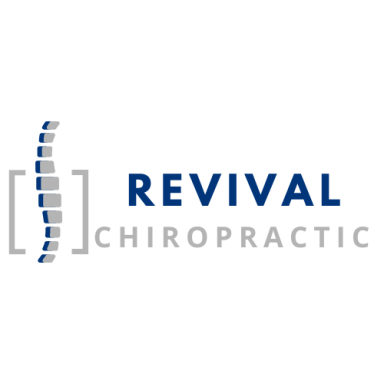
Arthritis
What is it?
Inflammation of one or more joints, leading to pain, stiffness, and decreased mobility.
Common Causes
Aging, autoimmune disorders, injury, overuse, obesity.
How Chiropractic Helps
We use gentle mobilization and adjustments to improve joint mobility, reduce inflammation, and slow degeneration. Our treatment often includes soft tissue therapy and exercise guidance.
Statistics
About 24% of adults in the U.S. have arthritis. A study in the Journal of Manipulative and Physiological Therapeutics found chiropractic care effective in improving range of motion and decreasing pain for osteoarthritis patients.

Car Accidents (Personal Injury)
Why it Matters
Even minor auto accidents can lead to musculoskeletal issues that may not present symptoms immediately. Whiplash, soft tissue injuries, joint dysfunction, and nerve impingement are common.
How Chiropractic Helps
Addresses whiplash and neck injuries by gently realigning the cervical spine and reducing muscle tension.
Reduces inflammation and promotes natural healing without medications.
Improves range of motion and function post-injury.
Documents your injuries properly to support personal injury or MedPay claims if needed.
Statistics
Whiplash symptoms can occur in collisions at speeds as low as 5-10 mph.
According to the National Highway Traffic Safety Administration, there are over 2 million injuries from car accidents each year in the U.S.
A study in the Journal of Orthopaedic Medicine found that 93% of patients with chronic whiplash showed improvement with chiropractic care.

Chronic Fatigue
Common Causes
Low energy can be caused by poor sleep, stress, hormonal imbalances, nervous system overload, or physical pain draining the body’s resources. Many patients feel chronically tired even after a full night’s sleep.
How Chiropractic Helps
Removes nervous system interference, which can help the body better regulate hormones and adapt to stress.
Reduces chronic pain, allowing the body to conserve energy that was previously spent managing inflammation or muscle tension.
Improves sleep quality, as proper spinal alignment can enhance relaxation and reduce nervous system hyperactivity.
Boosts circulation and mobility, helping oxygen and nutrients travel more efficiently through the body.
Statistics
Patients receiving chiropractic care often report increased energy and vitality as a secondary benefit, even when not seeking care specifically for fatigue.
A study in the Journal of Manipulative and Physiological Therapeutics found that spinal adjustments can lead to measurable improvements in heart rate variability (HRV), a marker of stress adaptability and energy regulation.

Digestion
Common Causes
Nervous system imbalances (gut-brain axis dysfunction)
Poor diet and stress
Misalignments in the thoracic or lumbar spine interfering with nerve flow to digestive organs
Sluggish organ function or inflammation
How Chiropractic Helps
Supports the gut-brain connection by removing subluxations (misalignments) that may interfere with the autonomic nervous system, which controls digestion.
Stimulates the parasympathetic nervous system, the “rest and digest” system, to promote healthier gut function.
Reduces spinal tension, particularly in the mid and lower back where nerves influence the stomach, liver, intestines, and other digestive organs.
Improves posture, which can relieve physical pressure on abdominal organs and encourage more efficient digestion.
Statistics
Research shows the vagus nerve, which exits the spine near the upper cervical region, plays a key role in digestive health — and chiropractic care may enhance vagal tone and function.
A 2016 case study published in Annals of Vertebral Subluxation Research reported improved digestion in patients receiving chiropractic care for thoracic subluxations.

Elbow & Wrist Pain
Common Causes
Repetitive movements (typing, lifting), trauma, poor ergonomics.
How Chiropractic Helps
Adjustments of the cervical spine and extremities reduce nerve interference. Soft tissue techniques and ergonomic advice provide relief and prevent recurrence.
Statistics
Carpal tunnel syndrome affects about 3-6% of adults. Chiropractic adjustments have shown to reduce symptoms in up to 70% of mild to moderate cases.

Fibromyalgia
What is it?
A chronic condition causing widespread pain, fatigue, and cognitive difficulty.
Common Causes
Unknown, but linked to stress, trauma, and genetics.
How Chiropractic Helps
Gentle spinal adjustments improve nervous system function, reduce tender points, and enhance sleep and energy.
Statistics
Affects 4 million U.S. adults (about 2% of the population). One study in Clinical Rheumatology found that spinal manipulation helped reduce pain and fatigue in fibromyalgia patients.

Headaches & Migraines
Common Causes
Neck tension, misalignment, stress, dietary triggers.
How Chiropractic Helps
Realignment of cervical vertebrae can reduce pressure on nerves, alleviate muscle tension, and restore blood flow.
Statistics
Headaches affect nearly 50% of adults worldwide. A study in JMPT showed chiropractic spinal manipulation reduced migraine frequency and intensity by up to 90%.

Hip Pain
Common Causes
Arthritis, bursitis, misalignment, overuse, spinal imbalance.
How Chiropractic Helps
Adjustments improve hip joint alignment and reduce pressure caused by spinal or pelvic misalignment.
Statistics
Hip pain affects 14.3% of adults over 60. Chiropractic care often improves mobility and function, especially when combined with strengthening exercises.

Knee, Foot & Ankle Pain
Common Causes
Sports injuries, flat feet, overuse, improper footwear, misalignment and muscular strain.
How Chiropractic Helps
Adjusting foot, ankle, and knee joints restores function and reduces compensation patterns. Orthotics and rehab exercises may be used.
Statistics
Ankle injuries occur in over 2 million people annually. Chiropractic rehab reduces recovery time and recurrence.

Low Back Pain
Common Causes
Poor posture, disc injury, sedentary lifestyle, lifting improperly.
How Chiropractic Helps
Spinal adjustments relieve nerve pressure, reduce inflammation, and restore normal function.
Statistics
The most common cause of disability globally. Research from The Lancet supports spinal manipulation as first-line treatment for low back pain.

Neck Pain/ Tech Neck
Common Causes
Device usage, poor ergonomics, stress.
How Chiropractic Helps
Restores spinal curvature, improves mobility, and reduces muscle strain through adjustments and postural coaching.
Statistics
20%–70% of adults. Chiropractic care has been shown to improve neck pain significantly more than medication in several randomized trials.

Pinched Nerves
What is it?
Compressed or irritated nerves causing pain, numbness, or weakness.
Common Causes
Herniated discs, misalignment, inflammation.
How Chiropractic Helps
Adjustments relieve pressure on nerves, restore alignment, and improve nerve flow.
Statistics
About 85 out of 100,000 people suffer from pinched nerves annually. Chiropractic care can improve symptoms without surgery or medication.

Prenatal
Why it Matters
Pregnancy brings major changes to a woman's body — including shifting posture, loosening ligaments, and increasing pressure on the spine and pelvis. These physical changes often cause back pain, sciatica, pelvic discomfort, and even headaches.
How Chiropractic Helps
Reduces low back and pelvic pain by improving alignment of the pelvis and spine.
Encourages optimal fetal positioning by balancing the pelvis and surrounding muscles/ligaments (especially with the Webster Technique).
Supports nervous system function to reduce discomfort and support overall wellness during pregnancy.
Helps improve labor outcomes by reducing tension and misalignment that could interfere with the birth process.
Statistics
Over 50% of pregnant women report experiencing back pain during pregnancy, especially in the third trimester.
A study published in the Journal of Midwifery & Women’s Health found that 84% of pregnant patients who received chiropractic care reported relief from back pain.
The Webster Technique, often used in prenatal care, has shown positive outcomes in reducing intrauterine constraint and improving fetal position.
Disclaimer: The information provided on this page is for educational and informational purposes only and is not intended as a substitute for professional medical advice, diagnosis, or treatment. Always seek the advice of a qualified healthcare provider with any questions you may have regarding a medical condition or before starting any new healthcare regimen. Never delay seeking treatment or disregard medical advice based on information provided here. If you are experiencing a medical emergency, call 911 immediately.

Sciatica & Radiculopathy
What is it?
Radiating pain along the sciatic nerve, usually from the low back to the leg.
Common Causes
Herniated discs, spinal misalignment, piriformis syndrome.
How Chiropractic Helps
Adjustments relieve compression on the sciatic nerve and improve spinal alignment to prevent recurrence.
Statistics
Affects about 40% of people in their lifetime. Chiropractic care is often as effective as surgery for sciatica, with fewer risks. Studies show 60–80% of patients report significant improvement with chiropractic care.

Scoliosis
What is it?
Abnormal lateral curvature of the spine.
Common Causes
Idiopathic/ unkown (most common), congenital, neuromuscular.
How Chiropractic Helps
While not a cure, chiropractic adjustments can reduce symptoms, improve function, and support posture alongside rehab.
Statistics
About 2–3% of the population has scoliosis. Research supports conservative management like chiropractic to improve quality of life.

Upper Back & Shoulder Pain
Common Causes
Poor posture, repetitive motion, spinal misalignment.
How Chiropractic Helps
Spinal manipulation improves alignment and reduces nerve pressure. Rehab and posture training enhance outcomes.
Adjusts shoulder and nearby joints to improve mobility and function of the shoulder girdle (including clavicle, scapula, and AC joint).
Statistics
Upper back pain affects up to 30% of adults at some point. Chiropractic care can significantly reduce pain intensity and frequency.
Shoulder pain affects 18–26% of adults at any point in time, making it one of the most common musculoskeletal complaints.
Up to 50% of people with shoulder pain still report symptoms after 6 months if untreated.

Whiplash
What is it?
A soft tissue with possible spinal injury from sudden neck movement, often in car accidents.
Common Causes
Auto accidents, sports injuries, falls.
How Chiropractic Helps
Restores neck motion, reduces scar tissue formation, and alleviates muscle tension.
Statistics
Over 3 million cases per year in the U.S. Chiropractic is a leading conservative treatment for whiplash-associated disorders.
Disclaimer: The information provided on this page is for educational and informational purposes only and is not intended as a substitute for professional medical advice, diagnosis, or treatment. Always seek the advice of a qualified healthcare provider with any questions you may have regarding a medical condition or before starting any new healthcare regimen. Never delay seeking treatment or disregard medical advice based on information provided here. If you are experiencing a medical emergency, call 911 immediately.
Practice Info:
Telephone: +1
E-mail: info@revivalchiropractic.org
Address: 8670 Wolff Court Unit 165, Westminster, CO 80031
